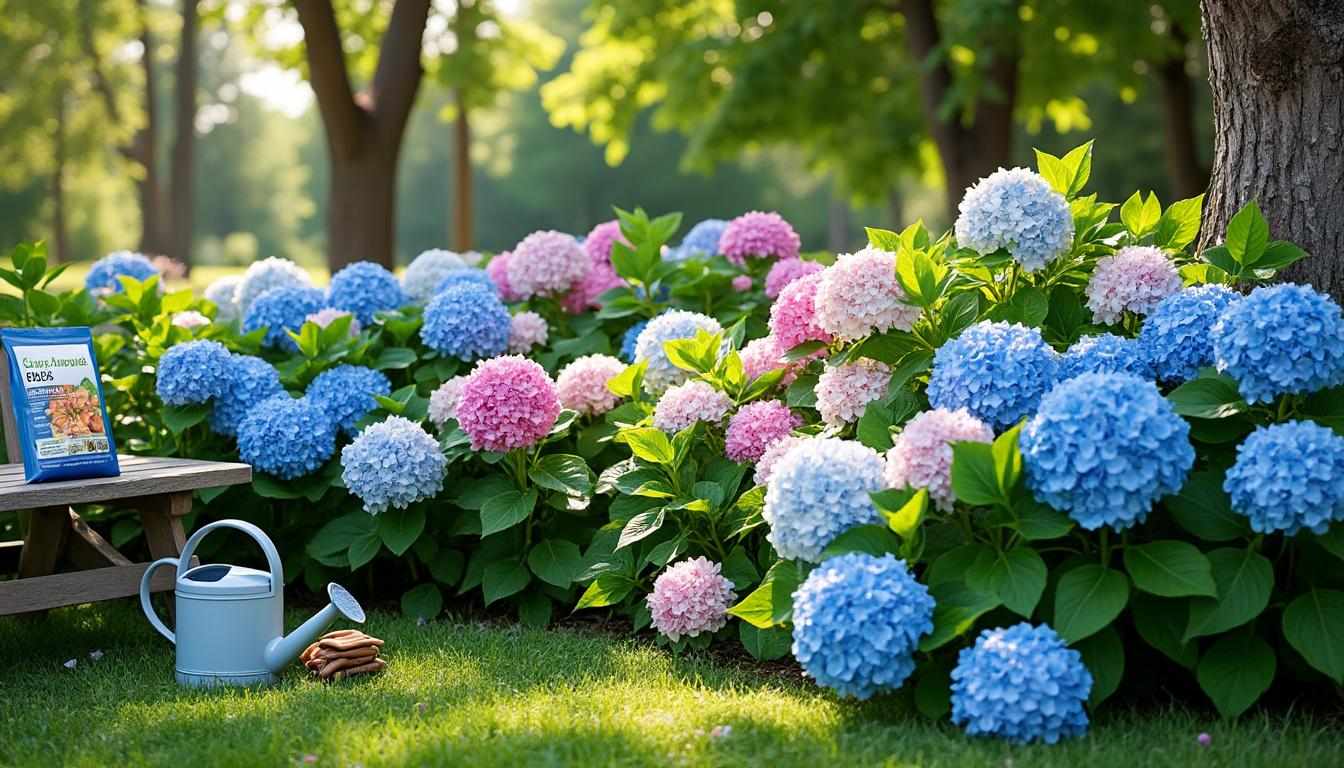Hydrangeas, with their lush foliage and vibrant blooms, remain a staple in many gardens throughout the world. As gardening enthusiasts seek reliable guidance to foster these captivating plants, insights from experienced horticulturists like Pat Sullivan become invaluable. Known for his expertise at Sullivan Hardware and Garden, Pat Sullivan offers nuanced advice that transforms hydrangea care from a seasonal challenge into a rewarding endeavor. This article dives deep into essential tips and professional strategies for nurturing hydrangeas, while weaving in trusted practices from respected brands such as Miracle-Gro, Espoma, and Proven Winners.
Understanding Hydrangea Varieties for Targeted Care
A foundational aspect of successful hydrangea cultivation lies in discerning the specific type of hydrangea in question. Pat Sullivan emphasizes this distinction, categorizing hydrangeas primarily into two types: Paniculata—commonly white flowering and sun-loving—and Macrophylla, which boast colorful blossoms. This differentiation is crucial, as each variety demands tailored environmental conditions and maintenance routines.
For example, paniculata hydrangeas thrive when exposed to full sunlight, displaying robust growth and copious blooms with straightforward upkeep. Conversely, macrophylla varieties prefer shaded to partially sunny locales, where their colorful sepals flourish with moderated light intensity.
In general, gardeners benefit from selecting hydrangea species compatible with their local climate and soil conditions. Some of the most trusted suppliers like Monrovia and Burpee offer regionally adapted hydrangea cultivars, assisting enthusiasts in matching plants to environment for optimal results. From southern gardens to cooler northern yards, having a hydrangea that suits local parameters reduces stress for the plant and enhances ornamental quality.
- Paniculata Hydrangeas: Full sun tolerance, white blooms, straightforward pruning.
- Macrophylla Hydrangeas: Partial shade preference, colorful flowers, acid or alkaline soil-dependent blooms.
- Oakleaf and Climbing Varieties: Additional types with unique growth habits and care requirements.
The table below outlines key characteristics and ideal care parameters for popular hydrangea types:
| Hydrangea Type | Sunlight Preference | Soil Requirements | Bloom Colors | Pruning Guidelines |
|---|---|---|---|---|
| Paniculata | Full Sun | Well-drained, moist | White, turning pink as season progresses | Late winter or early spring |
| Macrophylla | Partial Shade | Acidic for blue, alkaline for pink | Blue, pink, purple | After flowering in summer |
| Oakleaf | Partial Shade | Rich, acidic to neutral | White to pinkish | After blooming |
Understanding these distinctions equips gardeners to apply precise care techniques, enhancing bloom vigor and overall plant health. Additionally, sourcing fertilization products from established suppliers such as Espoma or Miracle-Gro ensures that nutrient delivery aligns with the specific needs of each hydrangea variant.
Soil Preparation and Nutrition Strategies for Thriving Hydrangeas
Hydrangeas are notably responsive to soil quality and nutrient balance, making soil preparation a crucial aspect of their nurturing. Pat Sullivan highlights that the pH level of soil not only affects plant health but can alter hydrangea flower color, particularly in macrophylla types. Acidic soils with a pH below 6 tend to yield blue or lavender flowers, while alkaline soils above pH 7 promote pink or reddish blooms.
To adjust soil pH and boost growth, gardeners should incorporate organic matter and well-tested soil amendments. For example, products from Gardener’s Supply Company and High Country Gardens provide natural options to enrich planting beds effectively. The use of coffee grounds, as explored in a related gardening resource, can also supplement nitrogen and add organic content—though care is advised as overapplication can disrupt soil balance (Avoid coffee grounds in your garden).
Regular feeding schedules incorporating balanced fertilizers tailored for hydrangeas also foster vibrant growth. Brands like Miracle-Gro are recommended for their consistent efficacy, especially formulations designed for acid-loving plants. Espoma’s organic-trademarked products are similarly popular for encouraging healthy blooms and deep foliage.
- Test and adjust soil pH before planting to optimize flower coloration and nutrient uptake.
- Incorporate organic compost or peat moss to improve moisture retention and soil richness.
- Apply fertilizer during early spring and repeat every 4-6 weeks during active growing months.
- Use mulching to stabilize soil temperature and moisture, reducing stress on root systems.
The following table summarizes recommended soil amendments and nutrition approaches by hydrangea type:
| Hydrangea Type | Optimal Soil pH | Recommended Fertilizer | Organic Amendments | Frequency of Feeding |
|---|---|---|---|---|
| Paniculata | 6.0 – 7.0 | Balanced NPK (10-10-10) | Compost, mulch | Every 6 weeks |
| Macrophylla | 5.0 – 6.0 (acidic for blue blooms) | Acid-loving plant fertilizer | Peat moss, pine needles | Every 4 weeks |
| Oakleaf | 6.0 – 7.0 | Balanced, enriched organic mix | Leaf mold, compost | Every 6 weeks |
Pat Sullivan also stresses the value of consistent watering complementary to nutrition, advising gardeners to maintain moist but not waterlogged soil for healthiest root development. Proven Winners and Park Seed provide hydrangea-specific soil mixes that address these soil moisture needs while ensuring proper drainage.
Sunlight and Watering Techniques to Boost Hydrangea Growth
The delicate balance between sunlight exposure and watering frequency significantly affects hydrangea vitality. Drawing on Pat Sullivan’s experience, paniculata hydrangeas are highly tolerant of full sun, requiring at least six hours of direct sunlight daily to produce strong stems and abundant flowers. On the other hand, bigleaf hydrangeas (macrophylla) prefer dappled sunlight or morning sun with afternoon shade to protect from leaf scorch.
Watering practices must adapt to these light conditions while considering seasonal fluctuations. Hydrangeas enjoy evenly moist soil; however, overwatering risks root rot, especially in poorly draining substrates. Sullivan’s guidance recommends deep watering twice weekly during warm months, tapering off during cooler periods.
- Water deeply early in the morning to maximize absorption and reduce fungal risks.
- Apply mulch around the base to lock in moisture and suppress weeds.
- Adjust watering frequency during summer heat waves and rainy periods.
- Monitor soil moisture regularly with a probe or finger check.
Applying mulch is universally advised, with companies like Jackson & Perkins offering horticultural-grade mulching products that foster moisture retention and temperature control. Burpee recommends mulching not only for moisture but also as a natural barrier against pests that can threaten hydrangea leaves and blooms.
| Hydrangea Type | Recommended Sun Exposure | Watering Frequency | Mulch Types | Additional Care Notes |
|---|---|---|---|---|
| Paniculata | Full Sun (6+ hours) | Twice weekly deep watering | Bark chips, straw | Prune in winter for shape |
| Macrophylla | Partial Shade (3-5 hours) | Every 3-4 days during dry spells | Pine needles, shredded leaves | Protect from afternoon sun |
| Oakleaf | Partial Shade | Twice weekly moderate watering | Wood mulch, leaf litter | Check for powdery mildew |
Pruning and Maintenance Routines to Ensure Year-Round Hydrangea Health
Strategic pruning improves both the aesthetic and health aspects of hydrangeas. Pat Sullivan highlights the importance of understanding blooming habits to prune effectively. Paniculata hydrangeas bloom on new wood, meaning pruning can be done in late winter or early spring without sacrificing that season’s flowers. For macrophylla, which blooms on old wood, pruning requires a gentler approach: trimming dead or weak stems immediately after flowering to protect next year’s buds.
Deadheading spent blossoms promotes additional blooms and prolongs flowering periods. Resources for gardeners, including articles on deadheading techniques, confirm this practice’s positive impact on plant vigor and garden appearance. Removing damaged or diseased leaves decreases the risk of pests and diseases, common in the humid environments favored by hydrangeas.
- Identify whether your hydrangea blooms on old or new wood before pruning.
- Use clean, sharp shears to make precise cuts that heal quickly.
- Deadhead regularly during blooming season for renewed floral displays.
- Remove any diseased leaves promptly to prevent spread.
Timely pruning not only shapes the plant but also stimulates vigorous growth and robust flowering the following season, a practice endorsed by gardening product leaders such as Proven Winners and Park Seed. This ensures that your hydrangeas remain standout features in the garden year after year.
Common Challenges in Hydrangea Care and How to Overcome Them
Hydrangeas are resilient yet can face common issues that compromise their beauty. Pat Sullivan points out several challenges, from pest invasions to environmental stressors, which gardeners should recognize and address promptly.
One frequent issue is powdery mildew, prevalent in high humidity. Good air circulation and avoiding overhead watering help in prevention. For pests such as aphids or spider mites, organic insecticidal soaps from brands like Espoma provide effective treatment without harmful residues.
Leaf discoloration often signals nutrient deficiencies or incorrect watering. Monitoring soil moisture and supplementing with trace minerals as part of a balanced fertilization regime keeps plants resilient. Additionally, placing hydrangeas in unsuitable lighting conditions may cause bud drop or lackluster blooms; adjustment based on type-specific sunlight preferences is essential.
- Inspect plants weekly for pests and remove affected leaves promptly.
- Avoid overwatering and ensure well-draining soil to prevent root rot.
- Address nutrient deficiencies with appropriate feedings from trusted brands.
- Use shade cloths or reposition plants if sunlight exposure is excessive or inadequate.
Pat Sullivan recommends consulting with local nurseries such as Jackson & Perkins for region-specific advice and product recommendations. For gardeners seeking additional cultural tips, reviewing seasonal gardening advice such as summer gardening maximization tips enhances success in maintaining vigorous hydrangea plants year-round.
Frequently Asked Questions About Hydrangea Care
- How often should I fertilize my hydrangeas? Fertilize every 4-6 weeks during the growing season, adjusting frequency based on the hydrangea type and the fertilizer guidelines.
- Can I change the color of my hydrangea flowers? Yes. Soil pH influences flower color in macrophylla hydrangeas — acidic soil produces blue flowers, alkaline soil leads to pink or red hues.
- When is the best time to prune hydrangeas? Paniculata hydrangeas are best pruned in late winter or early spring, while macrophylla varieties should be pruned right after flowering in summer.
- What are the signs of overwatering hydrangeas? Yellowing leaves, wilting, and root rot indicate excessive watering. Ensure soil drains well and adjust watering schedule accordingly.
- How do I protect hydrangeas from pests naturally? Use organic insecticidal soaps from trusted providers like Espoma, maintain good airflow, and remove infested leaves promptly.

